Features Editor
The Search for Drivers and the Fight to Keep Them
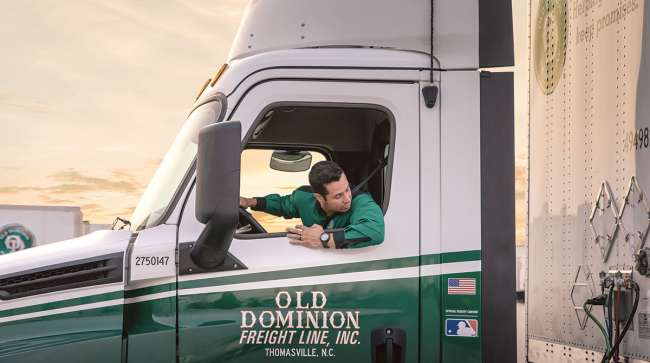
[Stay on top of transportation news: Get TTNews in your inbox.]
For people like Ryan Hollinger and Gary Gentry, truck driving is what they have always known since they were young boys. Both grew up watching their fathers drive Class 8 trucks, and decades later, Hollinger and Gentry have found solid careers in the trucking industry.
“For me, it’s the freedom when it comes to employment and having a steady stream of income coming in,” said Hollinger, who drives for a liquor distributor. “[It’s] just you in the cabin and you’re just alone in your space. It’s cool. You’re not stuck in a cubicle or even a warehouse.”
Gentry’s path to trucking was born from sharing his father’s interest.
“It was trucks, the railroad and the Navy,” said Gentry, a retired U.S. Navy veteran. He is an owner-operator of 3G Trucking. “I was getting closer to retirement [from the Navy], and I figured I’d either become a Merchant Marine [or] work at an embassy, but I love trucks, so I just got my license.”
Number 1 - #Trucking #TruckingResearch #ATRI https://t.co/GGCo4i4JkQ — ATRI (@Truck_Research) October 27, 2020
Hollinger and Gentry — drivers for more than two decades — are enjoying successful trucking careers. Despite the stories they can share of experiences with toxic employers, both know they work in an industry where their services are in high demand and they are paid competitively.
Although the career opportunities in trucking are abundant, the driver shortage has been a thorn in the industry’s side for years, and it has only become more severe as freight demand has surged amid the recovery from the COVID-19 pandemic.
In fact, the driver shortage has ranked No. 1 on the American Transportation Research Institute’s annual Top Industry Issues list in each of the past four years.
While there isn’t a quick-fix solution, getting to the root of the problem is the first line of attack for many fleets. Some use the recruitment process as an introduction to their company.

England
“We’re a trucking company run by truckers,” Chad England, CEO of refrigerated carrier C.R. England, said of his fleet’s story. “I’m the oldest of four brothers that run the business. We want all of our executives to know what it’s like to be a truck driver.”
England said that experience behind the wheel helps him and his trucking company better relate to drivers, but he — and the drivers — also realize that it’s important to have realistic expectations.
“[Some drivers] get into it not really understanding what’s involved in being a driver,” Gentry said from his experiences. “They quit because they think they’re not making any money and then those drivers will work for a different company.”
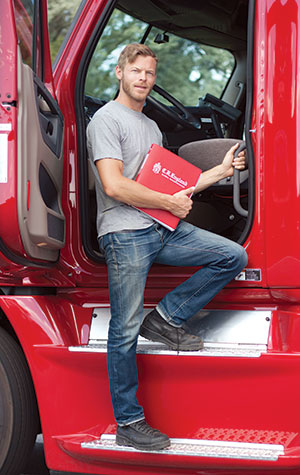
C.R. England
Gentry said fleets that are honest and straightforward have the edge in attracting well-qualified drivers.
England explained his fleet made a pivot to hiring more experienced drivers, and through that transition, learned that a competitive pay package is the driving factor. The fleet announced a pay rate increase earlier this year.
“You’ve just got to have something good to sell, it’s also about being able to attract great people,” he said. “And you can’t do that without a top-flight pay package with a great home time. We try and avoid anything that can be confusing or deceptive practices.”
C.R. England, based in Salt Lake City, ranks No. 25 on the Transport Topics Top 100 list of the largest for-hire carriers in North America.
XPO Logistics feels well positioned to attract top-tier drivers by offering professional growth opportunities, especially in a tight labor market, said Josephine Berisha, chief human resources officer at the less-than-truckload carrier.
“We’ve streamlined our hourly pay structure to reduce the time it takes to reach top pay. We’re also hiring at the top rung of pay for positions and locations that meet certain criteria,” she said. “We’re offering attractive sign-on bonuses for drivers that vary by market and merit increases. All of our benefits kick in on day one; there’s no qualification period for health coverage and many of our other benefits.”
XPO, headquartered in Greenwich, Conn., ranks No. 3 on the for-hire TT100.
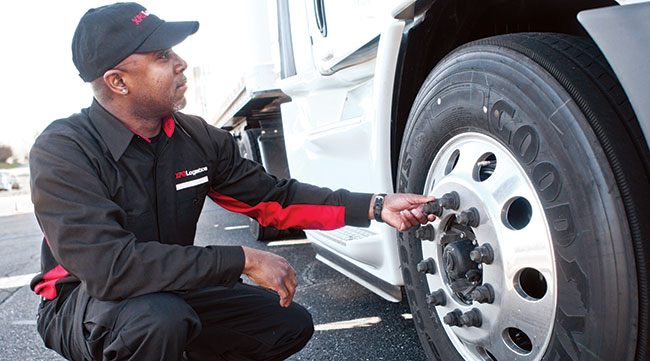
XPO continually adds new trucks to its fleet. (XPO Logistics)
The data shows that fleets are offering more generous compensation packages to entice and keep drivers like Hollinger and Gentry. Driver compensation, which was the No. 2 concern among professional drivers in ATRI’s 2020 Top Industry Issues list, has increased along with other forms of compensation, according to ATRI’s most recent Operational Costs of Trucking analysis, released in November 2020.
“In that analysis, we found that the average retention bonus paid to a driver was up 81.3% over the previous year, for an annual average amount of $1,218,” said ATRI President Rebecca Brewster. “We point out in the research that fleets are turning to the other forms of compensation — starting, retention and safety bonuses — as a way to increase overall driver compensation to improve retention.”
As fleets ramp up their campaigns to attract experienced drivers, they also keep an eye toward new drivers and train them to not only learn, but hone their craft.
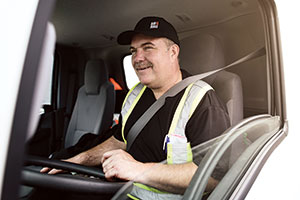
Day & Ross has trainers who mentor graduates, and the fleet also builds close relationships with driving schools. (Day & Ross)
“When it comes to growing our fleet, we look at all channels for recruiting drivers — including schools,” said Ron Martin, vice president of driver recruiting at Canada-based transportation provider Day & Ross. “We also have trainers who mentor graduates, and we’ve built close relationships with driving schools to help us conduct road testing.”
Day & Ross ranks No. 31 on the for-hire TT100.
While some fleets have internal driver training programs, others prefer to build rapport with CDL driving schools to acquire the latest talent entering the industry.
“We reach out to those local driving schools for that relationship, and it’s amazing,” said Dee Dee Cox, vice president of human resources at LTL carrier Old Dominion Freight Line. “When we first go in there, we talk about who ODFL is and how we operate. They are willing to partner with us and try to get drivers in there.”
Cox said ODFL also reaches out to high schools to meet youth who might aspire to a career in trucking.

Cox
“We try to get into the hiring events or the career fairs that local high schools offer,” she said. “And we offer a great dock-to-driver program. We just feel like transportation ... is a great career path.”
ODFL, based in Thomasville, N.C., ranks No. 10 on the for-hire TT100.
In its push to attract experienced drivers, C.R. England made the decision to focus its efforts.
“We audited many of [our partnering schools] and found that some were cutting corners,” England said. “So we drastically reduced the schools that we’re partnering with to really make sure that we were only working with the top of the top class.”
Improving Driver Retention
Despite being surrounded by the industry as a child, Hollinger initially didn’t think that driving a truck would be a long-term career path.

How much impact does driver pay have in hiring drivers? And what else can fleets do to recruit and retain quality talent? Hear a snippet from DriverReach founder and CEO Jeremy Reymer, above, and listen to the full program at RoadSigns.TTNews.com.
“At the time, it was a job. I just got married and needed something consistent,” he said. “I never really thought it would turn into a career. At the moment, I was doing my best for us, but here I am 17 years later and I’m glad I made that choice.”
Hollinger remembers places where he felt his hard work was taken advantage of, or he was simply not being heard. Before landing his current position, he was searching for a place where he would feel appreciated.
“Where I’m at, there’s an open-door policy 24/7. If I have a problem, it’s addressed and fixed,” he said. “My manager and my supervisor were both drivers before they took those positions, so they’ve been out on the road and they know what we deal with.”
At a large fleet, some employees may feel overlooked, but it’s up to the company to foster strong relationships with its drivers, ODFL’s Cox said.
“They want to be appreciated. Those are the things that keep the employees here and at any company,” she said. “If drivers don’t feel appreciated or they don’t feel a part of the company, I think that has a lot to do with them wanting to leave and go to another company, and be a part of something.”
Providing the proper feedback loop for employees may not be the easiest thing to do in some cases. However, having that line of communication helps fleets better understand their drivers.

Farrell
“It’s a starting point for how to create a habit of empathy,” said Max Farrell, co-founder and CEO of WorkHound, a communication platform that supports real-time feedback for frontline workers. “The act of listening to your people is not just a one-time initiative. It’s not just a one-time annual survey or one-step surveying. You have to have a commitment to continuously listen and continue to get better because situations are changing constantly.”
WorkHound’s platform enables drivers to provide anonymous feedback on their current job experience. From there, managers review and work with employees to assuage any concerns and take appropriate action. Several fleets credit Farrell’s firm for helping to reduce employee turnover.
“Over time, trust is built between companies and their drivers,” he said. “Drivers see the company respect their anonymity and that increases confidence. This has actually led to more direct outreach from drivers to the company after they have started to build trust.”
Day & Ross, which uses WorkHound to gauge driver satisfaction, also connects with staff via regular one-on-one and team meetings, and continuously meets with its safety and operations teams for updates.

McMahon
“We take driver feedback seriously and implement it where possible, whether it’s offering better routes or evaluating driver pay,” said Shawn McMahon, chief operating officer at Day & Ross. “From the very beginning, we believed it’s important to put the right drivers in the right positions to match their unique skills and needs, and we have a great recruiting team who helps make this possible.”
England takes a hands-on approach to communicating with his drivers. For several years, the fleet has held a monthly town hall meeting with its drivers.
“We have hundreds that get on every month. It’s basically just an open Q&A,” he explained. “We have our entire executive team on the call. It’s intended to be a safe place to be able to bring up feedback and questions and to talk about things together. And that’s been an outstanding process.”
Although good employee relationships are key, there are other benefits and attributes that employers keep in focus to address drivers’ concerns.
According to the 2020 Driver Recruiting and Retention Annual Report, produced jointly by Professional Driver Agency and Conversion Interactive Agency, the drivers surveyed listed equipment as their top issue of concern, followed by driver pay and operations. That data parallels the feedback received by WorkHound.
“The top feedback themes in 2020 were logistics, equipment, people and pay,” Farrell said. “Drivers want a smooth process when moving freight. They want reliable equipment to do the job. They want empathetic staff to support them. When it comes to pay, they want simple and predictable pay.
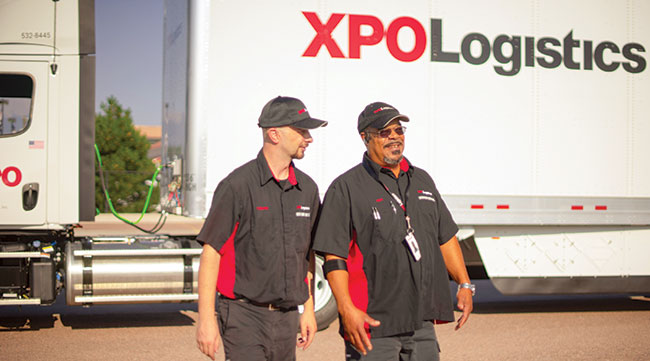
XPO recently recognized 230 of its less-than-truckload drivers for achieving more than 1 million accident-free miles. (XPO Logistics)
On the equipment front, XPO continually adds new trucks to its fleet to enhance the driver in-cab experience.
The fleet also provides flexible shift options to enable its drivers to return home from a same-day shift.
In addition, XPO documents and recognizes its drivers’ safety data. The fleet recently recognized 230 of its LTL drivers for achieving more than 1 million accident-free miles.
With its in-house safety training and coaching programs, XPO realized a 28% decrease in distracted driving and 19% decrease in lost work days in the past year.
Although feeling wanted and having the right resources are key ingredients in the recipe for success in any work environment, pay often remains the difference between retention and turnover.
England suggested that the quest for the perfect, qualified employee in what is currently a driver’s market will force fleets to tangibly value the commercial driver.
“When you get to a certain level of pay, I don’t think we’re going to be able to go back. The market will not allow it,” England said.
He added that the current business environment will help fleets attract and keep experienced drivers.
“For too long, our industry has been in a situation where we are undercompensated for the type of work that we do and we are getting closer to where we need to be. I think we still have a long way to go,” England said, “but I hope that this market, this capacity crunch that our customers are seeing, lasts a while. Because that will allow all of the drivers and all the people in our industry to be compensated more closely to the value they’re providing.”
Want more news? Listen to today's daily briefing below or go here for more info:




